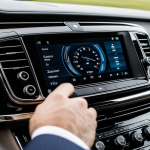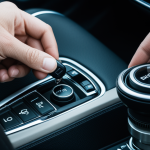Understanding Dechroming
Dechroming is an exciting aspect of car customization that involves the careful removal of chrome accents. This process is favoured by automotive enthusiasts for both its aesthetic appeal and its ability to transform the overall look of a vehicle. By eliminating chrome elements, a car can appear more sleek and modern, making it stand out on the road. Additionally, chrome removal benefits extend beyond style; reducing glare and making maintenance considerably easier.
However, despite its popularity, there are lingering common misconceptions about the dechroming process. Some believe it is a complex procedure that only professionals should undertake or that it severely compromises the integrity of the vehicle’s exterior. In reality, with the correct guidance and tools, many car customization fans successfully complete this as a do-it-yourself project. Understanding the steps involved and knowing how to tackle potential challenges are critical to achieving desired results. Whether changing a single accent or undergoing a complete transformation, dechroming offers endless possibilities for personalisation and enhancing a car’s visual attractiveness.
Topic to read : The Complete Step-by-Step Guide to Setting Up a Legal Home EV Charging Station in the UK
Tools and Materials Required for Dechroming
To successfully undertake a DIY dechroming project, having the right tools and materials is crucial. Essential tools include plastic trim removal tools, which help in dismantling chrome pieces without causing damage to the vehicle. Additionally, a heat gun is recommended to assist in loosening adhesive bonds.
For materials, chemical chrome removers specifically designed for vehicles offer an effective way to strip chrome layers. Opt for removers labelled safe for automotive use. It’s also wise to have microfiber cloths and masking tape on hand; the former for cleaning and buffing, the latter for protecting surrounding areas during removal.
This might interest you : Your Ultimate Roadmap: Mastering the Import of JDM Cars into the UK
In the UK, many of these tools and materials can be sourced from automotive parts stores or online retailers. Websites like Halfords or Euro Car Parts offer a wide selection perfect for car enthusiasts ready to take on chrome removal. Local automobile supply shops often carry these essentials, allowing for quicker access and personalized advice. By investing in quality dechroming tools and materials, you’ll ensure a more efficient and satisfying car customization experience.
Step-by-Step Dechroming Instructions
When embarking on a DIY dechroming process, preparation is key.
Preparation of the Car
Begin by thoroughly washing the car to remove dirt and grime. It’s essential to have a clean surface for the chrome removal guide to be effective. Use masking tape to protect paintwork and any parts of the vehicle you wish to keep untouched.
Application of Chrome Remover
Next, apply a chrome removal solution that is safe for automotive use. Use a plastic trim removal tool to carefully pry loose any chrome accents. The remover should be evenly applied and left for the time recommended by the manufacturer to ensure effective loosening.
Final Touches
After successfully stripping the chrome, buff the surface with a microfiber cloth to achieve a smooth finish. Consider applying a protective wax or sealant to guard against future wear. Ensuring a smooth, clean finish is paramount for a visually appealing result that stands out.
By following these steps, you can transform your vehicle’s appearance, making it distinct and modern.
Safety Tips and Precautions
Prioritising dechroming safety is essential, especially when using chemicals. Always wear personal protective equipment (PPE), such as gloves, goggles, and masks, to prevent exposure to hazardous materials. These precautions protect against skin irritation and inhalation risks often associated with working with chrome removers.
Careful handling of chemicals is crucial. Ventilation is key—perform the procedure in a well-ventilated area to disperse fumes. Furthermore, it’s vital to strictly adhere to the product’s safety instructions. Incorrect use can lead to accidents or ineffective results, affecting both your safety and the car’s condition.
Understanding potential hazards, such as spills, is part of being prepared. Have absorbent materials at hand for prompt spill responses. If chemicals contact skin, immediately rinse with water for at least 15 minutes. It’s also wise to keep emergency contact numbers accessible.
By integrating these safety measures into your DIY car customization project, you ensure a secure and efficient dechroming experience, thus enhancing both the process and the final outlook of your vehicle.
Troubleshooting Common Issues
Navigating dechroming challenges can transform frustration into success. One prevalent problem is tackling stubborn chrome that refuses to budge. A strategic approach involves reapplying the chrome removal solution and using a heat gun to gently loosen the adhesive. Patience and repeated attempts often yield the best results.
Another hurdle is the risk of damaging the car’s paint. To avoid this, ensure the masking tape is applied meticulously, shielding any areas you don’t intend to alter. In the unfortunate event of a slip-up, owning a small touch-up paint kit can help mend minor scratches or marks efficiently.
Encountering streaks or an uneven finish post-removal is also common. A remedy lies in consistent buffing with a microfiber cloth, ensuring that surfaces are left smooth and blemish-free. For particularly tough spots, a gentle automotive polish might enhance shine and eliminate residual imperfections.
Should these issues persist, consulting with a professional can provide peace of mind and additional insights. Understanding dechroming problems equips you with the knowledge to overcome obstacles, making the car customization process more rewarding.
UK Regulations and Environmental Considerations
When it comes to the dechroming process, understanding UK dechroming regulations is essential. The UK’s strict laws govern the use of chemicals to ensure both safety and environmental protection. Adhering to these regulations during car customization not only ensures compliance but also promotes responsible practices.
One of the key chrome removal benefits is its reduced environmental impact when done correctly. To achieve this, dechroming enthusiasts must ensure responsible disposal of removed chrome materials. This involves utilising designated waste facilities that handle automotive chemicals properly. By doing so, the potential for environmental contamination is significantly minimized.
Additionally, the environmental impact of chrome removal can be managed by opting for eco-friendly materials and methods. For instance, choosing biodegradable or less toxic chemical removers helps reduce harmful emissions. Embracing such practices underscores a commitment to sustainability.
It’s crucial to remain informed about updates to UK environmental laws related to automotive chemicals. By carefully considering these factors, car enthusiasts can maintain their vehicles’ aesthetics while ensuring they adhere to best practices for eco-friendly dechroming.
Enhancing the Dechromed Look
After successfully navigating the dechroming process, it’s time to consider how to further enhance your vehicle’s aesthetics. Customizing a dechromed car often includes creative finishing touches like applying new paint or choosing wraps to add a splash of colour or sophistication. Teamed with sleek, matte finishes, these options allow car enthusiasts to fashion a unique vehicle personality.
For those seeking an additional layer of protection, car wrapping can be an ideal choice. This protective layer not only boosts visual appeal, but also shields the surface from environmental damage. Another option is opting for a custom paint job that complements the car’s structure, offering an enduring freshness to the dechromed surface.
To maintain this freshly enhanced appearance, regular care is necessary. Gentle washing with mild soap and water, avoiding harsh chemicals, can keep the dechromed sections and add-ons looking pristine. By combining customization with upkeep, the car’s visual appeal and protective layer both receive a boost, offering your vehicle a refined and striking on-road presence.
Case Studies and Examples
Exploring dechroming transformations offers insight into both the potential and the real-world application of this popular car customization trend. Before-and-after photos from successful projects vividly demonstrate the dechroming process, highlighting its ability to inject modern appeal into vehicles. These visual testimonials serve as a testament to the dramatic aesthetic impact achievable through skillful chrome removal.
Testimonies from enthusiasts illustrate the variety of approaches possible in dechroming examples. Whether opting for a complete overhaul or targeting specific accents, each project showcases unique creativity. Stories from those who have embraced the DIY approach often emphasize the rewarding sense of accomplishment and the enhancement of their car’s individuality.
Popular trends in the UK market feature minimalist designs that focus on sleekness and simplicity. Many showcase a penchant for a matte finish, which complements the dechromed surface beautifully. These trends reflect a growing desire for vehicles that stand out through elegant subtlety and personalised style. Overall, these case studies powerfully underscore chrome removal benefits, offering inspiration for others considering the transformation journey.





